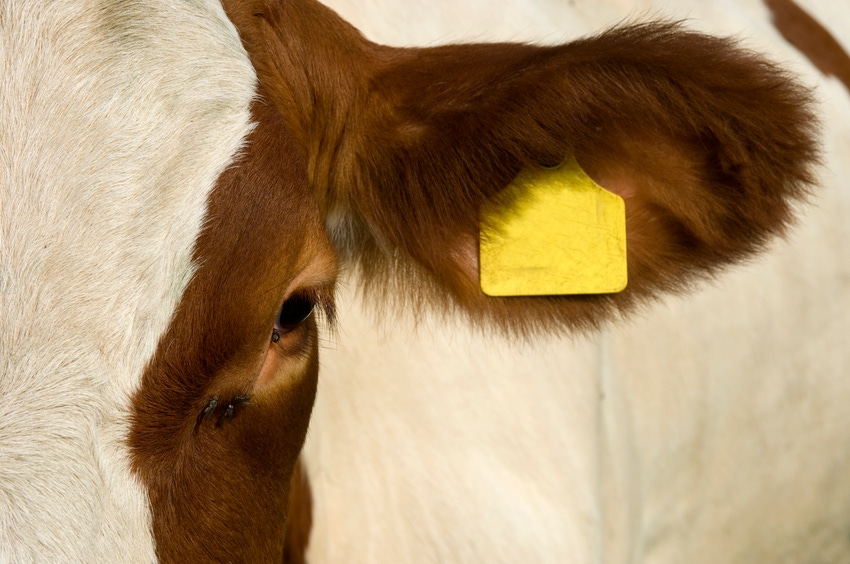How electronic animal ID has helped one rancher increase his management reach.

“Let me tell you from a business perspective what I can get from one reading of an EID tag. I can wand that cow and tell you the total number of cows we have on the ranch. I can tell you if I bought that cow, where she was bought. And if we preg(-check) that cow and she’s open and we ship her, I can tell you where we sent her. I can tell you when that cow was pregged and what the vaccination program was.”
In short, says Joe Leathers, general manager of the 6666 Ranch, headquartered at Guthrie, Texas, the amount of data he could enter and then retrieve with one swipe of a tag reader is unlimited. And that, he told the crowd at the Strategy Forum on Livestock Traceability recently in Denver, has value.
“Do I think there’s a premium going to come from EIDing your calves? Yes, because I think the amount of data you can put in and the tools you can get from it, you can manage your herd to improve the quality of the cattle.”
What’s more, he says size isn��’t a limitation. Even though the Four Sixes is one of the large, iconic Texas ranches with operations in Nevada, Wyoming and Montana as well, Leathers understands small operations. After all, he was raised on a cotton farm where his dad ran 50 cows on land too rough to farm.
“If somebody wants to buy my calves and I can print that sheet off and tell him that calf was born on which ranch, is projected to weigh this much, got vaccinated at this age, re-vaccinated at this age, this is what my herd is, cows and bulls, I think there’s value to be added there.”
That’s the business aspect of animal traceability. What about disease traceback? Reflecting on his time spent as one of the current commissioners on the Texas Animal Health Commission (TAHC), that’s important, too, he says. But to be successful in developing and implementing a usable and useful animal disease traceability system, he adamantly says that a partnership must be created between livestock producers and state and federal animal health officials.
“How do you do that? You’ve got to break down the walls of mistrust. And you’ve got to make them (beef producers) a part” of the process, he says.
He knows of what he talks about. The fever tick is a big issue along the Texas-Mexico border and the U.S. has for many years had a concerted effort to keep the fever tick at bay. But Leathers says the ranchers within the fever tick quarantine zone were beginning to wonder if the effort was worth the cost and began talking about getting out of the ranching business.
“So we suggested (to the TAHC staff), why don’t you go get together and let them devise a plan that works for them and you. And I think we’ve had some very positive results.”
Leathers tried that approach again during one of the USDA listening sessions on animal disease traceability in Fort Worth. During the public comment period, Leathers says he heard some very passionate complaints in opposition.
Later, the group broke into breakout sessions. In the one Leathers attended, that passionate opposition continued. “So I said, ‘how could you fix it?’ It took less than 15 minutes of just talking. Those very intelligent leaders of the industry were coming up with solutions. I saw right there that there needs to be a partnership created between the federal and state officials and the industry stakeholders.”
So his suggestion is that such a group be created that represents all sizes and aspects of the beef marketing chain. “And you put together a prototype and you get a group of large and small ranchers to run the prototype, a test, if you will. And you run it with just that small group of people until it works.”
To make that work, Leathers says it will take producers who will think beyond their own fences; “Individuals willing to think about somebody besides themselves and their own world of concern.” Then have those battle-tested producers introduce the program to the rest of the industry.
He admits there will still be issues to be worked out and not everyone will agree. “But this program isn’t going to be 100% and you’re going to have to get flexible on what a realistic goal is for percentage of traceback.”
But he believes that the partnership approach is the only way to make it work. “When you get like-minded producers to help put the rules and regulations together, then bring it back to the producer, it happens. Because there’s been a partnership created.”
About the Author(s)
You May Also Like



